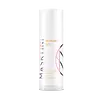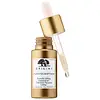What's inside
What's inside
 Key Ingredients
Key Ingredients

 Benefits
Benefits

 Concerns
Concerns

 Ingredients Side-by-side
Ingredients Side-by-side

Water
Skin ConditioningTetrahexyldecyl Ascorbate
AntioxidantCaprylic/Capric Triglyceride
Masking3-O-Ethyl Ascorbic Acid
Skin ConditioningGlycerin
HumectantPropanediol
SolventSodium Hyaluronate
HumectantArginine
MaskingCitrus Nobilis Peel Oil
MaskingCitrus Paradisi Peel Oil
MaskingCitrus Aurantium Dulcis Peel Oil
MaskingPolyglyceryl-6 Polyricinoleate
EmulsifyingAcrylates/C10-30 Alkyl Acrylate Crosspolymer
Emulsion StabilisingXanthan Gum
EmulsifyingDisodium EDTA
Ethylhexylglycerin
Skin ConditioningPhenoxyethanol
PreservativeLimonene
PerfumingWater, Tetrahexyldecyl Ascorbate, Caprylic/Capric Triglyceride, 3-O-Ethyl Ascorbic Acid, Glycerin, Propanediol, Sodium Hyaluronate, Arginine, Citrus Nobilis Peel Oil, Citrus Paradisi Peel Oil, Citrus Aurantium Dulcis Peel Oil, Polyglyceryl-6 Polyricinoleate, Acrylates/C10-30 Alkyl Acrylate Crosspolymer, Xanthan Gum, Disodium EDTA, Ethylhexylglycerin, Phenoxyethanol, Limonene
Water
Skin ConditioningAcacia Senegal Gum
MaskingButylene Glycol
HumectantRosa Damascena Flower Oil
MaskingLavandula Angustifolia Oil
MaskingPelargonium Graveolens Flower Oil
MaskingIllicium Verum Fruit/Seed Oil
MaskingCitrus Aurantium Bergamia Fruit Oil
MaskingCarthamus Tinctorius Seed Oil
MaskingMyristica Fragrans Kernel Oil
MaskingCitrus Aurantium Dulcis Peel Oil
MaskingCitrus Nobilis Peel Oil
MaskingCitrus Limon Peel Oil
MaskingLitsea Cubeba Fruit Oil
MaskingHibiscus Abelmoschus Extract
MaskingLinalool
PerfumingCitronellol
PerfumingLimonene
PerfumingGeraniol
PerfumingCitral
PerfumingMethyl Gluceth-20
HumectantGlycereth-26
HumectantCommiphora Mukul Resin Extract
Skin ConditioningPorphyridium Cruentum Extract
Skin ConditioningPrunus Amygdalus Dulcis Seed Extract
Skin ConditioningAlgae Extract
EmollientSigesbeckia Orientalis Extract
Skin ConditioningBambusa Vulgaris Extract
Skin ConditioningCentaurium Erythraea Extract
Skin ConditioningCrithmum Maritimum Extract
Skin ConditioningCoffea Arabica Seed Extract
MaskingCynara Scolymus Leaf Extract
Skin ConditioningRosmarinus Officinalis Leaf Extract
AntimicrobialSolanum Tuberosum Pulp Extract
SmoothingAnogeissus Leiocarpus Bark Extract
Skin ProtectingCaffeine
Skin ConditioningSqualane
EmollientPullulan
Pisum Sativum Extract
Skin ConditioningAcetyl Hexapeptide-8
HumectantLaminaria Digitata Extract
Skin ProtectingMicrococcus Lysate
Skin ConditioningSodium Hyaluronate
HumectantHydrogenated Vegetable Oil
EmollientOleth-3 Phosphate
Caprylic/Capric Triglyceride
MaskingCaprylyl Glycol
EmollientGlycerin
HumectantBisabolol
MaskingOleth-3
EmulsifyingHydroxypropyl Methylcellulose
Emulsion StabilisingOleth-5
EmulsifyingTocopheryl Acetate
AntioxidantCarbomer
Emulsion StabilisingPEG-75
HumectantXanthan Gum
EmulsifyingTetrahexyldecyl Ascorbate
AntioxidantGlucosamine Hcl
Sodium Hydroxide
BufferingSodium Dehydroacetate
PreservativeHexylene Glycol
EmulsifyingLecithin
EmollientDisodium EDTA
Phenoxyethanol
PreservativeWater, Acacia Senegal Gum, Butylene Glycol, Rosa Damascena Flower Oil, Lavandula Angustifolia Oil, Pelargonium Graveolens Flower Oil, Illicium Verum Fruit/Seed Oil, Citrus Aurantium Bergamia Fruit Oil, Carthamus Tinctorius Seed Oil, Myristica Fragrans Kernel Oil, Citrus Aurantium Dulcis Peel Oil, Citrus Nobilis Peel Oil, Citrus Limon Peel Oil, Litsea Cubeba Fruit Oil, Hibiscus Abelmoschus Extract, Linalool, Citronellol, Limonene, Geraniol, Citral, Methyl Gluceth-20, Glycereth-26, Commiphora Mukul Resin Extract, Porphyridium Cruentum Extract, Prunus Amygdalus Dulcis Seed Extract, Algae Extract, Sigesbeckia Orientalis Extract, Bambusa Vulgaris Extract, Centaurium Erythraea Extract, Crithmum Maritimum Extract, Coffea Arabica Seed Extract, Cynara Scolymus Leaf Extract, Rosmarinus Officinalis Leaf Extract, Solanum Tuberosum Pulp Extract, Anogeissus Leiocarpus Bark Extract, Caffeine, Squalane, Pullulan, Pisum Sativum Extract, Acetyl Hexapeptide-8, Laminaria Digitata Extract, Micrococcus Lysate, Sodium Hyaluronate, Hydrogenated Vegetable Oil, Oleth-3 Phosphate, Caprylic/Capric Triglyceride, Caprylyl Glycol, Glycerin, Bisabolol, Oleth-3, Hydroxypropyl Methylcellulose, Oleth-5, Tocopheryl Acetate, Carbomer, PEG-75, Xanthan Gum, Tetrahexyldecyl Ascorbate, Glucosamine Hcl, Sodium Hydroxide, Sodium Dehydroacetate, Hexylene Glycol, Lecithin, Disodium EDTA, Phenoxyethanol
Alternatives
Ingredients Explained
These ingredients are found in both products.
Ingredients higher up in an ingredient list are typically present in a larger amount.
This ingredient is an emollient, solvent, and texture enhancer. It is considered a skin-softener by helping the skin prevent moisture loss.
It helps thicken a product's formula and makes it easier to spread by dissolving clumping compounds.
Caprylic Triglyceride is made by combining glycerin with coconut oil, forming a clear liquid.
While there is an assumption Caprylic Triglyceride can clog pores due to it being derived from coconut oil, there is no research supporting this.
Learn more about Caprylic/Capric TriglycerideCitrus Aurantium Dulcis Peel Oil is oil from the peel of an orange fruit.
Limonene and linalool make up the majority of oils from citrus peels. Limonene has a "citrus" fragrance. Citrus peels also contain flavonoids, which have anti-inflammatory properties.
Citrus peel is also a rich source of flavonoids. Flavonoids are natural antioxidants and help protect your skin against damage. Flavonoids are a group of compounds naturally found in vegetables and fruits.
The term 'fragrance' is not regulated in many countries. In many cases, it is up to the brand to define this term. For instance, many brands choose to label themselves as "fragrance-free" because they are not using synthetic fragrances. However, their products may still contain ingredients such as essential oils that are considered a fragrance.
Learn more about Citrus Aurantium Dulcis Peel OilCitrus Nobilis Peel Oil is an oil.
Disodium EDTA plays a role in making products more stable by aiding other preservatives.
It is a chelating agent, meaning it neutralizes metal ions that may be found in a product.
Disodium EDTA is a salt of edetic acid and is found to be safe in cosmetic ingredients.
Learn more about Disodium EDTAGlycerin is already naturally found in your skin. It helps moisturize and protect your skin.
A study from 2016 found glycerin to be more effective as a humectant than AHAs and hyaluronic acid.
As a humectant, it helps the skin stay hydrated by pulling moisture to your skin. The low molecular weight of glycerin allows it to pull moisture into the deeper layers of your skin.
Hydrated skin improves your skin barrier; Your skin barrier helps protect against irritants and bacteria.
Glycerin has also been found to have antimicrobial and antiviral properties. Due to these properties, glycerin is often used in wound and burn treatments.
In cosmetics, glycerin is usually derived from plants such as soybean or palm. However, it can also be sourced from animals, such as tallow or animal fat.
This ingredient is organic, colorless, odorless, and non-toxic.
Glycerin is the name for this ingredient in American English. British English uses Glycerol/Glycerine.
Learn more about GlycerinLimonene is a fragrance that adds scent and taste to a formulation.
It's found in the peel oil of citrus fruits and other plants such as lavender and eucalyptus. The scent of limonene is generally described as "sweet citrus".
Limonene acts as an antioxidant, meaning it helps neutralize free radicals.
When exposed to air, oxidized limonene may sensitize the skin. Because of this, limonene is often avoided by people with sensitive skin.
The term 'fragrance' is not regulated in many countries. In many cases, it is up to the brand to define this term. For instance, many brands choose to label themselves as "fragrance-free" because they are not using synthetic fragrances. However, their products may still contain ingredients such as essential oils that are considered a fragrance.
Learn more about LimonenePhenoxyethanol is a preservative that has germicide, antimicrobial, and aromatic properties. Studies show that phenoxyethanol can prevent microbial growth. By itself, it has a scent that is similar to that of a rose.
It's often used in formulations along with Caprylyl Glycol to preserve the shelf life of products.
Sodium Hyaluronate is hyaluronic acid's salt form. It is commonly derived from the sodium salt of hyaluronic acid.
Like hyaluronic acid, it is great at holding water and acts as a humectant. This makes it a great skin hydrating ingredient.
Sodium Hyaluronate is naturally occurring in our bodies and is mostly found in eye fluid and joints.
These are some other common types of Hyaluronic Acid:
Learn more about Sodium HyaluronateTetrahexyldecyl Ascorbate (THD) is a stable and oil-soluble form of Vitamin C.
THD is special in that it has the ability to travel deeper into skin than traditional ascorbic acid while maintaining the same skin benefits (double win!).
Because it’s oil-soluble, THD dives deep into your skin’s fatty layers (think ceramides and cholesterol) to fight off the kind of free radicals that mess with your skin barrier. This makes it a great pair with water-based vitamin C (ascorbic acid) that mainly works on the surface.
Even at just 0.1%, THD is already showing great antioxidant activity. When used up to 2%, it helps keep your skin happy and calm, especially when it’s stressed from pollution or sun.
Want to fade dark spots or tackle hyperpigmentation? You’ll want 5% or more. Pairing it with brightening buddies like niacinamide or licorice root gives even better results. One study even used 30% THD with other brighteners and saw real results on stubborn discoloration, even in melasma-prone skin.
A note on THD: It’s has a slightly silky, oily texture and usually shows up colorless or pale yellow (though the exact shade can vary by supplier).
While you can sneak it into water-based formulas, it really shines when paired with silicones or oils, which help your skin soak it up better.
THD is pretty stable, but it’s still vulnerable to degradation like ascorbic acid. Too much light or heat (above 113°F / 45°C) can break it down over time. Go for dark and opaque packaging that keeps it safe and shady!
Read more about other types of Vitamin C:
Learn more about Tetrahexyldecyl AscorbateWater. It's the most common cosmetic ingredient of all. You'll usually see it at the top of ingredient lists, meaning that it makes up the largest part of the product.
So why is it so popular? Water most often acts as a solvent - this means that it helps dissolve other ingredients into the formulation.
You'll also recognize water as that liquid we all need to stay alive. If you see this, drink a glass of water. Stay hydrated!
Learn more about WaterXanthan gum is used as a stabilizer and thickener within cosmetic products. It helps give products a sticky, thick feeling - preventing them from being too runny.
On the technical side of things, xanthan gum is a polysaccharide - a combination consisting of multiple sugar molecules bonded together.
Xanthan gum is a pretty common and great ingredient. It is a natural, non-toxic, non-irritating ingredient that is also commonly used in food products.
Learn more about Xanthan Gum